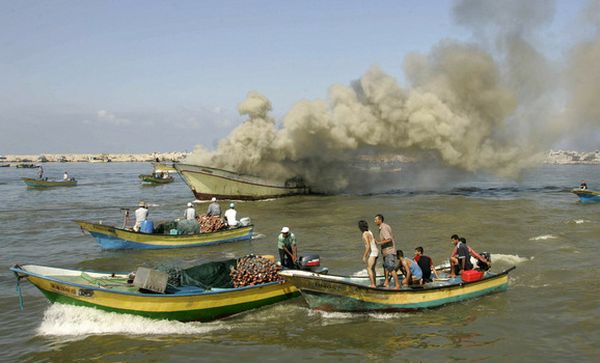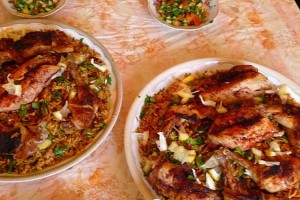Believe it or not, food and culinary traditions can bind people, especially in the midst of crises. Recently, Gaza has proved the world that despite crises, including food shortage and bombshells, the place has managed to bind its people together by following their culinary traditions and eating their distinctive foods, including spices which allow them to keep their culture and traditions intact.
Go to a restaurant or a kitchen in Gaza, you would notice how the cook or chef is busy smothering chilli sauce and tomato puree over fresh prawns. Don’t be astonished to hear the sizzle of a fish in a pan. Even with food shortages, the place is holding its traditions true, implementing them. Therefore, the mixtures are still poured into traditional clay bowls and the flames lap around open grill.
Cherished Gazan dishes are still produced with utmost care, love and respect for local cuisine and culinary culture. In fact, dishes like Zibdiyit Gambari are prepared every day, which helps people form a bond over food.
Young chefs like Abu Haseera say that Gazan people love fishes and seafood. Therefore, they prepare them in traditional ways.
Gaza is a small coastal strip, which inhabits more than 1.6 million Palestinians. These inhabitants have been fighting war and food shortages for a long time now, with most of them involved in fighting Israeli border blockade.
It is true that the image associated with Gaza is that of bombed building, explosions, bloodshed and masked gunmen, but a latest book aims to change this perspective.
This book, called ‘The Gaza Kitchen,’ is a cookbook that provides an alternative perspective on Gaza, describes its local cuisine and its distinctive spices and foods.
Co Author, Laila el-Haddad, who currently stays in the US, believes that Gazan food is a better way of narrating the story of Gaza. It not just describes the local cuisine, but it makes the story more personalized with conversations with women, men and children from Gaza.
It seeks to showcase how people in Gaza are still tightly bonded. For instance, Um Mohammed, who has a kitchen in Nuseirat Refugee Camp, discusses how he prepares typical Gazan salad using mortar, chilli, tomato, garlic and dill. While she prepares the dishes, other members of the family come together to discuss their best dishes and describe their favorite recipes, including that of maftool, couscous and sumagiyya.
It is true that it’s hard for the Palestinians to keep their Gaza traditions alive, especially after Israeli tightened their naval blockade, preventing fishermen from fishing across a few nautical miles. This has resulted in food shortage and power cuts. And with poverty and rampant unemployment, people try to keep their cultures alive by smuggling tunnels dug to the border of Egypt.
The book is an example of the undeterred spirits of Gaza and how Gaza has several facades to it, which shape its people, their traditions and their bonds.






